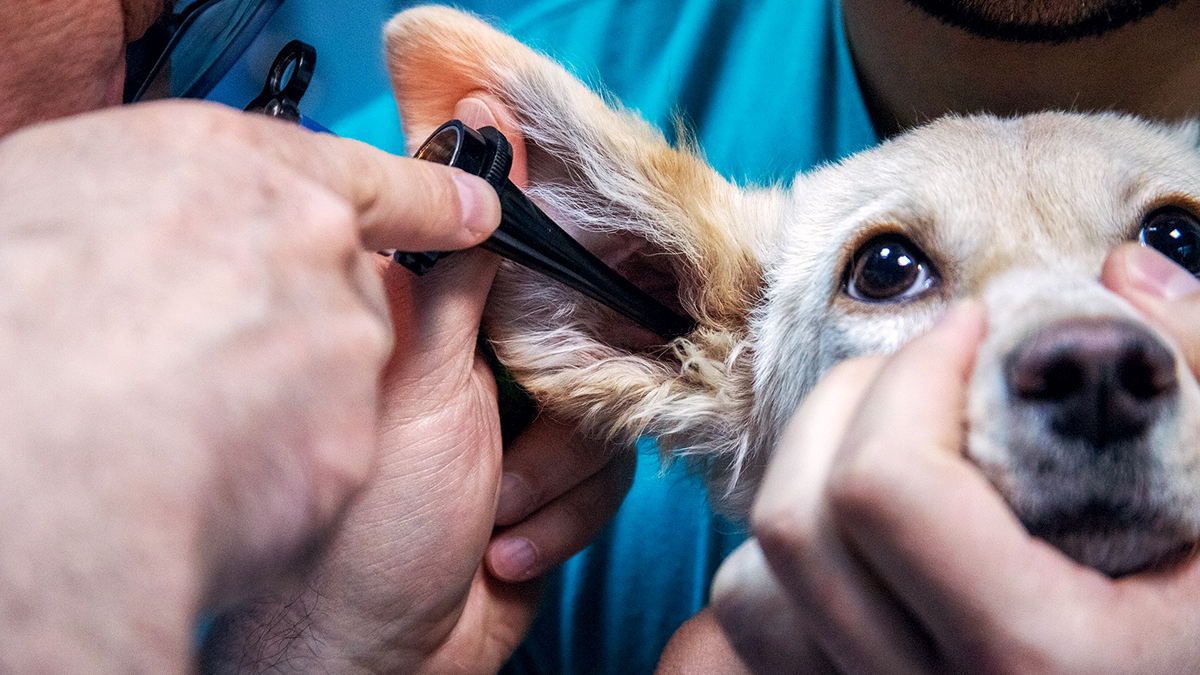Friends, infants, countrymen, lend me your ears;
I come to discuss the prevalence of invasive bacterial infections in afebrile infants with otitis media.
The Pediatric Emergency Medicine Collaborative Research Committee (PEMCRC) study on Invasive Bacterial Infections in Afebrile Infants Diagnosed with Acute Otitis Media
I could not resist starting with yet another poorly adapted Shakespearian introduction (To LP, or not to LP). This time we are talking about the conundrum of acute otitis media (AOM) in infants without a fever.
What’s the big deal?
The American Academy of Pediatrics (AAP) released guidelines1 for the diagnosis and management of otitis media in 2013, but these were limited to children > 6 months.

For younger infants (especially those <90 days), there remains concern for concomitant invasive bacterial infection (IBI), bacteremia and bacterial meningitis. Previous research in this population has contained a mixed population of febrile and afebrile infants2. So what is the prevalence of IBI in infants ≤90 days with afebrile AOM?
The Paper
McLaren SH, Cruz AT, Yen K, et al. Invasive bacterial infections in afebrile infants diagnosed with acute otitis media. Pediatrics. 2021;147(1). PMID: 33288730
Methods
This was a multi-center retrospective study across 33 pediatric emergency departments (29 USA, 2 Canadian, 2 Spanish) associated with the Pediatric Emergency Medicine Collaborative Research Committee over a 10 year period from 2007 to 2017.
They included infants ≤90 days with clinically diagnosed AOM. They excluded infants who were febrile or had temperature <36°C in the ED or within 48 hours, had antibiotics (except topical) within 48 hours, evidence of mastoiditis or focal bacterial infection, or were transferred after diagnostic testing and/or antibiotics at an outside hospital.
Patients were identified through chart review and specific ICD codes. It is important to note that the authors used simplified AAP diagnostic criteria defined as ≥1 middle ear exam finding supportive of AOM.
The primary outcome was prevalence of IBI and AOM-associated adverse events. The secondary outcomes included variability in diagnostic testing, antibiotic administration, and hospitalization.
Results
Of 5270 infants screened, 1637 were included in the study.
Zero of 278 infants (95%CI 0—1.4%) with blood cultures had bacteremia.
Zero of 102 infants (95% CI 0-3.6%) with cerebrospinal fluid (CSF) cultures had bacterial meningitis.
Two adverse events were reported:
- Culture negative sepsis vs milk-protein allergy in a 45-day-old infant
- Lymphadenitis 20 days later in a 32-day-old infant initially discharged on oral antibiotics
There was wide variation in testing, antibiotic administration, and hospitalization based on age.

My Thoughts
This is a thought-provoking study with some significant limitations.
Diagnosing AOM
The diagnosis of AOM is not straightforward to begin with as there is no gold standard. This makes it all the more challenging when conducting a retrospective chart review in which there is no way to verify that the diagnosis was correct.
Defining AOM
The authors chose to use simplified diagnostic criteria diagnosing AOM in this age group which included an isolated finding of tympanic membrane erythema which can be due to crying alone. I do not foresee many circumstances when infants do NOT cry when a plastic speculum is jammed into their ear. The inclusion of this group may lead to a larger denominator in the study group and an underestimation of the rate of IBI.
≤28 Day Population
I find it extremely challenging to properly visualize a tympanic membrane in an infant this young. Add to this the fact that the study only included 100 (6.1%) infants ≤28 days, it begs two questions: who is able to confidently make a diagnosis of AOM in this age group and how much should we trust the data from this age group?
Partial Verification Bias
Not all patients had CSF or blood cultures obtained. It is possible that bacteremia was treated by oral antibiotics in patients who did not have blood cultures drawn. This may also lead to underestimation of the rate of IBI.
Ultimately, I think there are two main ways to interpret the data from this study:
- The cynical pessimist: there are substantial limitations surrounding the identification of infants with AOM based on retrospective chart review. If the population that is being studied is in question, can we be confident about the conclusion?
- The cautious optimist: Although the study may have included a portion of infants who may or may not have truly had AOM, they still found zero cases of bacteremia or bacterial meningitis! This is consistent with the literature that suggests more patients have culture negative AOM in the post pneumococcal conjugate vaccine era3.
Personally, I find myself somewhere in the middle. I would be very wary about diagnosing AOM and prescribing antibiotics in a ≤28 day old infant without some blood testing.
Justin’s Thoughts
This paper confuses me. When I first heard about it, I thought we were talking about febrile infants. I was worried about the quality of the physical exam in young infants, and whether it would be good enough to exclude more serious illness, and therefore a more invasive workup. However, in the context of afebrile infants, this paper makes absolutely no sense to me. Are people really diagnosing afebrile infants with otitis media?
The physical exam findings for otitis media are so inaccurate, that I barely even trust them in febrile infants. What are the chances that there is a true otitis media in this group of kids without a fever? Is a small effusion or some erythema during crying really pathology, or are we just describing normal variants? (And, as Dennis points out, these patients were identified by chart review, which makes the accuracy of the physical exam findings even more questionable.)
In my mind, this paper is a perfect example of overdiagnosis. They took a bunch of children without clear infection and applied the label “otitis media” to them based on questionable exam findings. I would love to know the physicians’ actual thinking. Did they really think it was otitis media? Did they just want an excuse to provide antibiotics? Were they trying to satisfy parents? (Obviously there are some exceptions. Immunocompromised children may not mount a fever, and we might need to overtreat any possible bacterial infection. But for the average, healthy child, I seriously doubt the diagnosis of otitis media in the absence of fever.)
To be fair, half of these children were sick enough to be admitted to hospital, so their degree of illness may not be well reflected in their lack of fever. However, the majority were admitted for bronchiolitis. In other words, they had a known viral illness, which I think supports the argument that this study mostly describes overdiagnosis.
I am in no way surprised that there were 0 children with bacteremia or meningitis. I totally believe those results. These were afebrile kids. Do you really expect to identify meningitis in an afebrile infant with just some redness in their ear?
References
- Lieberthal AS, Carroll AE, Chonmaitree T, et al. The diagnosis and management of acute otitis media. Pediatrics. 2013;131(3):e964-999.
- Nozicka CA, Hanly JG, Beste DJ, Conley SF, Hennes HM. Otitis media in infants aged 0-8 weeks: frequency of associated serious bacterial disease. Pediatr Emerg Care. 1999;15(4):252-254.
- Ziv O, Kraus M, Holcberg R, et al. Acute otitis media in infants younger than two months of age: Epidemiologic and microbiologic characteristics in the era of pneumococcal conjugate vaccines. Int J Pediatr Otorhinolaryngol. 2019;119:123-130.
Other FOAMed
- Skeptics Guide to Emergency Medicine #334: In My Life There’s Been Earache and Pain, I Don’t Know if it’s IBI Again- in an afebrile infant with acute otitis media.
- Pediatric EM Morsels: Neonatal Acute Otitis Media
- Don’t Forget the Bubbles: Otitis Media
- PEM Playbook: Otitis Media
- Core EM: Acute Otitis Media
Image by Mirko Sajkov from Pixabay (yes, I think this is easier than checking for otitis media in a 3 week old)
Ren, D. Friends, infants, countrymen, lend me your ears: Invasive bacterial illness in afebrile infants with otitis media, First10EM, July 12, 2021. Available at:
https://doi.org/10.51684/FIRS.80614





